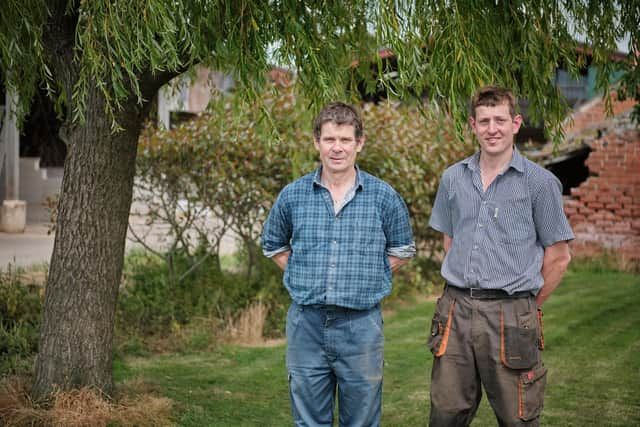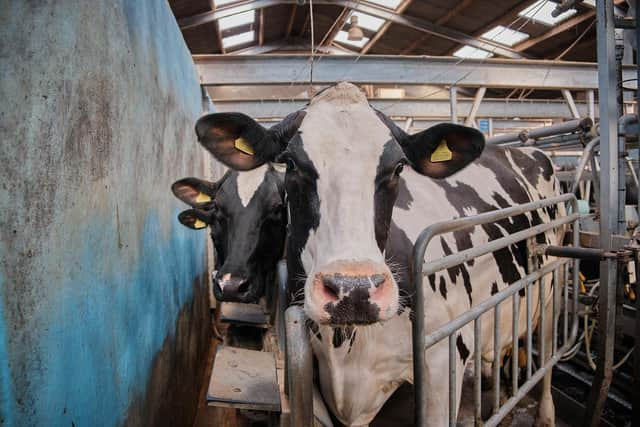How intensive farming is reducing carbon footprint for a North Yorkshire dairy farm
Howard and Tom Pattison, who run Willow Tree, a 162-hectare farm near Northallerton in North Yorkshire are one of two farms to have joined a strategic dairy farming programme with the Agriculture and Horticulture Development Board (AHDB).
Over the next three years they will be sharing the steps they have already taken to reduce their carbon footprint and key learnings as they continue to fine tune their business while improving their environmental credentials.
Advertisement
Hide AdAdvertisement
Hide AdOn Monday night, Howard and Tom, spoke at a meeting of the Whitby Dairy Discussion Group, to share their findings to date with local farmers who met at Sneaton Castle.


They have farmed on a closed herd basis for the last 30 years and have around 255 cows in milk and currently have around 23 per cent of heifers.
The herd is milked twice a day and produces around 12,600 litres of milk per year.
Their milk is supplied to Arla, where they have been asked to join the Starbucks contract and have recently signed up as part of the Arla 360 programme - which sets a range of standards across six areas with a particular focus on animal welfare, the environment and research and development.
Advertisement
Hide AdAdvertisement
Hide AdAt Willow Tree, they aim to reduce carbon footprint through feed efficiency, protein, land use, animal robustness ( measured on mortality) and fertiliser use.


One of the biggest improvements they reported over recent months was a reduction in mastitis amongst the herd and an increase in fertility.
Tom explained: “About a year ago we introduced AllFlex Heat Detection. Since we did that we have seen a big improvement in fertility and a big part of being efficient is fertility. It alerts us to sick animals and calving animals and it is a really worthwhile system.
“Between December 1, 2021 and February 28, 2022 conception rates were 38 per cent. Between December 1 2022 and February 28 this year they were 43 per cent. January was 50 per cent, we have never seen 40 per cent before, never mind that.
Advertisement
Hide AdAdvertisement
Hide Ad“At the beginning of last year, we had a problem with mastitis. Recently, we had one that has mastitis, she stopped eating and we got alerted at 6pm. By 6am the next morning we had treated and sorted her and she was back up. If we are using the health alert we can monitor the eating and get them going the right way.”
Mastitis rates on their farm are now 42 cases per 100 cows compared to 62 per 100 this time last year.
They have also changed the sand they use and the way they house the cows, which means they don’t have to be dug out as often, and has a positive effect on time use as they, like many farm businesses, are struggling to get labour.
Cows are being fed on a mix of feeds such as maize, straw and grass silage. Willow Tree has also replaced soya based feed with Novapro which has similar levels of protein but far less CO2 emissions.
Advertisement
Hide AdAdvertisement
Hide AdThe next stage the Pattisons will be looking at under the AHDB strategic farming scheme is land management – such as soil quality, slurry, nitrogen and fertiliser and GPS sampling.
Howard added: “We can’t shy away from it, technology is going to take over. If it can do a job rather than a man, we will, and because of labour. Whether it be robots or robotic parlours - time will tell.
“If we can get more milk per cow, intensive farming is more carbon neutral. Everything we have done has made more profit. By doing the job right, your carbon footprint will go down but profits will go up.”
